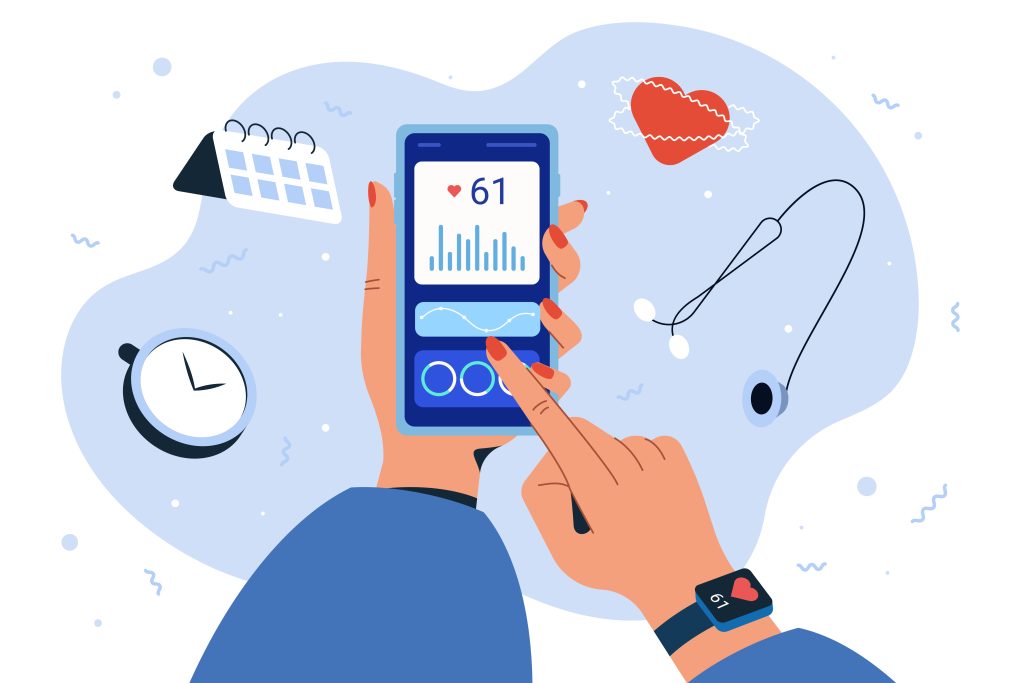In an increasingly interconnected world, the concept of real-time applications has transcended mere technological advancement to become an integral part of everyday life. From communication to transportation, healthcare to entertainment, the impact of real-time applications is pervasive and transformative. This article delves into the myriad ways in which these applications are shaping our present and defining our future.
Real-Time Applications in Communication
Imagine a world where messages are delivered instantly across the globe, where video calls are seamless and uninterrupted. This is the reality enabled by real-time communication applications. Platforms like WhatsApp, Zoom, and Slack have revolutionized how individuals and businesses interact, facilitating instant communication irrespective of geographical boundaries. Whether it’s coordinating global teams or connecting with loved ones halfway around the world, real-time applications have bridged the gap between distance and immediacy.
The evolution of real-time communication began with the advent of the internet and has since progressed exponentially. Early email systems introduced the idea of sending messages across the globe in seconds, but it was the development of instant messaging (IM) services like AOL Instant Messenger and MSN Messenger that truly showcased the potential of real-time interaction. These platforms paved the way for the modern giants of communication we use today.
In professional settings, tools like Microsoft Teams and Slack have become indispensable. They offer real-time collaboration features such as instant messaging, video conferencing, and file sharing, which enhance productivity and streamline workflows. These applications are particularly crucial in the era of remote work, allowing teams to stay connected and collaborate effectively, regardless of their physical location.
Social media platforms, too, have leveraged real-time applications to foster a sense of immediacy and community. Features like Facebook Live, Instagram Stories, and Twitter’s live-tweeting capabilities enable users to share moments as they happen, creating a dynamic and engaging user experience. This immediacy has also transformed the landscape of news consumption, with real-time updates providing instant access to global events.
Transforming Healthcare Through Real-Time Data

In the realm of healthcare, real-time applications have emerged as game-changers. Medical professionals now have access to real-time patient data, enabling quicker diagnosis and more effective treatment plans. Remote monitoring devices transmit vital signs in real-time, alerting healthcare providers to potential emergencies before they escalate. Telemedicine platforms allow patients to consult with doctors from the comfort of their homes, reducing wait times and improving accessibility. The integration of real-time data analytics has not only enhanced the quality of care but also saved countless lives.
Wearable technology, such as smartwatches and fitness trackers, has become increasingly popular for personal health monitoring. These devices collect and transmit real-time data on heart rate, activity levels, and sleep patterns, empowering individuals to take charge of their health. Healthcare providers can also utilize this data to gain insights into patients’ overall well-being and detect early signs of potential health issues.
Electronic health records (EHRs) have also benefited from real-time capabilities. By providing instant access to patient histories, test results, and treatment plans, EHRs facilitate better coordination among healthcare providers and ensure that patients receive consistent, informed care. Additionally, the integration of artificial intelligence (AI) and machine learning algorithms into EHR systems can help predict patient outcomes and recommend personalized treatment options based on real-time data analysis.
Enhancing Efficiency in Transportation and Logistics
The transportation and logistics sectors have embraced real-time applications to optimize efficiency and streamline operations. Ride-sharing apps like Uber and Lyft utilize real-time GPS tracking to match drivers with passengers, minimizing wait times and optimizing routes. Logistics companies leverage real-time data to track shipments, predict delivery times, and mitigate potential delays. These applications not only improve customer satisfaction but also reduce costs and environmental impact by optimizing resource allocation.
The rise of autonomous vehicles is a testament to the transformative potential of real-time applications in transportation. These vehicles rely on real-time data from sensors, cameras, and GPS systems to navigate and make split-second decisions. Companies like Tesla and Waymo are at the forefront of this technology, promising a future where self-driving cars are commonplace, reducing accidents, and increasing efficiency on the roads.
Public transportation systems have also benefited from real-time applications. Real-time tracking of buses and trains provides passengers with accurate arrival times and updates on delays, enhancing the overall commuting experience. Mobile apps for public transit systems offer route planning and ticket purchasing features, making it easier for users to navigate urban environments.
Real-Time Applications in Entertainment and Media

Entertainment and media consumption have undergone a paradigm shift with the advent of real-time applications. Streaming platforms such as Netflix and Spotify deliver content instantaneously, personalized to individual preferences. Live streaming services enable audiences to experience events in real-time, transcending geographical constraints and fostering global communities. Social media platforms leverage real-time analytics to deliver targeted content and enhance user engagement, shaping trends and influencing public discourse in real-time.
The gaming industry, in particular, has seen significant advancements through real-time applications. Online multiplayer games allow players from around the world to compete and collaborate in real-time, creating immersive and interactive experiences. Platforms like Twitch enable gamers to live-stream their gameplay, attracting large audiences and fostering a sense of community among viewers.
In the realm of digital media, real-time analytics play a crucial role in content creation and distribution. Platforms like YouTube and TikTok use real-time data to recommend videos and tailor content to individual user preferences. This personalization enhances user engagement and keeps audiences coming back for more.
Real-Time Applications in Finance and E-Commerce
The finance and e-commerce sectors have also harnessed the power of real-time applications to enhance customer experiences and streamline operations. Real-time payment systems enable instant transactions, reducing the time and effort required for financial exchanges. Services like PayPal, Venmo, and mobile banking apps have made it easier than ever to transfer money, pay bills, and manage finances in real-time.
E-commerce platforms leverage real-time data to optimize inventory management and improve customer service. Real-time tracking of orders allows customers to monitor their deliveries and receive updates on shipping status. Additionally, real-time analytics help retailers understand customer behavior and preferences, enabling personalized marketing and targeted promotions.
In the realm of stock trading, real-time applications are essential for making informed decisions. Traders rely on real-time data feeds to monitor market trends and execute trades at the optimal moment. Algorithmic trading systems use real-time data and complex algorithms to execute high-frequency trades, maximizing profits and minimizing risks.
The Future Outlook: Innovations and Challenges
Looking ahead, the future of real-time applications appears boundless yet challenging. Innovations in artificial intelligence (AI) and machine learning promise to further enhance the capabilities of real-time systems, enabling predictive analytics and autonomous decision-making. However, concerns surrounding data privacy, cybersecurity, and ethical implications remain prevalent. Striking a balance between innovation and responsibility will be crucial in harnessing the full potential of real-time applications while safeguarding user trust and societal values.
One area poised for significant growth is the Internet of Things (IoT), which relies heavily on real-time data to connect and automate devices. Smart homes, equipped with real-time monitoring and control systems, will offer enhanced convenience and energy efficiency. Industries such as manufacturing and agriculture will also benefit from IoT solutions that leverage real-time data to optimize processes and increase productivity.
The integration of 5G technology will further amplify the capabilities of real-time applications. With faster data transfer speeds and lower latency, 5G will enable more seamless and responsive interactions across various domains. From augmented reality (AR) and virtual reality (VR) experiences to advanced telemedicine solutions, the possibilities are vast.
However, the proliferation of real-time applications also raises ethical and security concerns. The vast amount of data generated and transmitted in real-time poses significant challenges in terms of data privacy and protection. Ensuring that real-time applications are secure and that user data is handled responsibly will be paramount. Additionally, the potential for algorithmic bias and the need for transparent AI systems will require careful consideration and regulation.
Conclusion
In conclusion, the pervasive influence of real-time applications in everyday life is undeniable. From communication to healthcare, transportation to entertainment, these applications have redefined the way we live, work, and interact with the world around us. As technology continues to evolve, embracing real-time capabilities will be essential for organizations and individuals seeking to stay ahead in an increasingly interconnected and fast-paced global landscape. The future is now, and real-time applications are at the heart of this transformative journey.
In crafting a future where immediacy meets innovation, real-time applications will continue to shape our present and define our future, driving progress and connectivity across all facets of human experience. As we navigate the challenges and opportunities that lie ahead, the integration of real-time applications into everyday life will undoubtedly play a pivotal role in shaping a more connected, efficient, and responsive world.
